CNC machined parts, i.e. parts processed by CNC equipment, CNC machining, usually refers to the precision machining method digitally controlled by a computer, which has become a common method of machining in nowadays.
CNC machining equipment, called CNC machine tools, also known as CNC machine tools, in different regions are also called somewhat differently, such as the Yangtze River Delta area is usually called machining centers, the Pearl River Delta area is usually called computer gong.
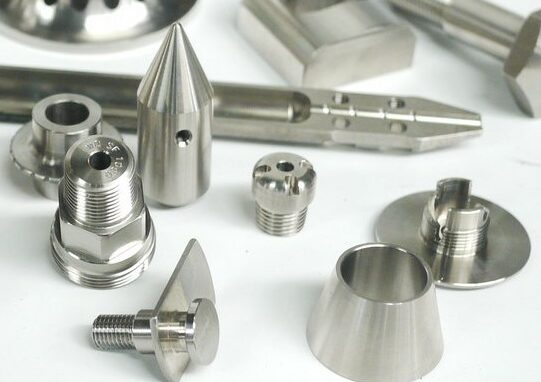
CNC Lathe - A lathe works by rotating material in a lathe chuck. The tool is then moved along 2 axes into the workpiece to cut cylindrical parts.
CNC milling machines - CNC milling machines are typically used to create flat parts, but more sophisticated machines with more degrees of freedom can create complex shapes; the material remains stationary, the spindle rotates with the tool, and the tool moves or rotates along 3 axes (some 4 or 5) to cut into the material; in some cases, the spindle is stationary and the into which the material will enter.
CNC Drilling Machines - These machines are similar to CNC milling machines, but they are specifically designed to cut along only one axis, i.e. the drill only moves down into the material along the Z-axis, and never cuts along the X- and Y-axis.
CNC Grinders - These machines move a grinding wheel into the material to produce a high quality surface finish. They are designed to remove small amounts of material from hardened metals; therefore, they are used as finishing operations.
CNC machining is widely used in various industries due to its high-precision nature. However, CNC machining services can also be a bit more expensive when compared to other manufacturing methods such as injection molding, die casting, stamping, and so on. There are several main areas that affect the cost of CNC machined parts:
Equipment costs include the initial purchase cost, operating costs, maintenance costs, etc. There may also be some other costs, such as tooling costs, CNC system use costs, etc. These costs will affect the cost of each machined part, so the higher the cost of purchasing, operating, and maintaining a machine, the more expensive the parts manufactured using that machine.
Milling machines are usually more costly than lathes because they have more complex moving parts; are more difficult to set up, operate, and maintain; and are capable of more complex machining. Therefore, if not necessary, parts should be designed to accommodate lathe machining.
There are different types of milling machines with varying degrees of complexity and capability. The more axes a milling machine has, the more expensive it is. Most modern CNC machines have three or five axes. While 5-axis machines can create very complex geometries more accurately and faster (so they require less machining time), they are usually more expensive than 3-axis machines.
Design costs for the actual machining of the costs incurred in preparation, mainly including CAD (structural, engineering design), CAE (optimization and analysis), CAM (manufacturing programming) costs involved in the process. The cost of CAD, CAE will not necessarily be apportioned to the cost of parts, depending on the way of cooperation between A and B. At the same time, the design cost is fixed, if the larger the volume, the lower the cost of design apportioned to each part.
Manufacturing parts involved in the material cost is one of the most important components of the cost of parts, material costs by the cost of raw materials, the amount of material, material processing time.
Raw material costs: the market price of different raw materials vary, while the price of different market areas are not the same, in the choice of raw materials for parts, should be based on the use of parts and functions of the selection of suitable materials, rather than selecting excessively expensive materials beyond the performance requirements, such as the same stainless steel, stainless steel 316 price is much more expensive than the price of stainless steel 304.
The amount of material: in the design of parts structure and manufacturing process, should consider the amount of material as little as possible, such as necessary, you can make two relatively simple parts through the subsequent assembly of a complex combination of parts by way of disassembling (requires more material consumption and processing time).
Material processing time: the cost of the part is directly proportional to the time required to process it, the processing time of the material is related to the machinability of the material, low machinability of the material requires more time to process, but also consumes more resources, such as cutting fluid, electricity and cutting tools. (For example, softer materials such as aluminum alloys are easier to cut, which means shorter machining times; whereas harder materials such as stainless steel require more expensive machining tools and are more prone to damage and wear on the tools, making the part more costly to machine).
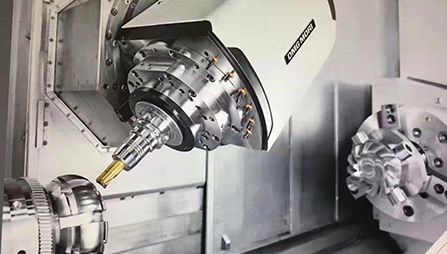
As the number of parts increases, the unit cost of a group of identical parts is significantly lower. This proportional reduction in cost is primarily the result of eliminating the cost of duplicate designs as well as machine setup debugging.CAD design, CAM preparation, and machine setup are all done at once for all parts to be manufactured. (i.e., if one part is produced, the design costs and machine setup costs are included in that one part, and if 1,000 pieces are produced, then the design costs and machine setup costs are spread equally over those 1,000 pieces).
CNC machined parts before processing, need to specify the tolerance requirements, surface roughness requirements, stricter tolerance requirements will lead to more difficult to process, and increase the scrap rate, which will also lead to higher costs; higher surface roughness requirements may lead to CNC milling parts can not be done, it is necessary to use a grinder or even other methods, increased processes, naturally increase costs.
After CNC machining parts are finished, some post-processing may be required, such as heat treatment, surface treatment, etc., in order to improve the function, performance and aesthetics of the parts, and all these post-processing requirements will increase the cost of the parts to a certain extent.
For surface treatment, another serious cost driver is applying different surface treatment requirements for different areas of the part. For example, partial plating, partial anodizing, two-color prototype oxidation, oxidizing one area and plating in another. Therefore, in order to reduce costs, if not necessary should try to keep the entire part surface treatment requirements consistent.
The more complex the structure of the part, the higher the manufacturing cost, highly complex parts may require more advanced machinery, they also require more processing time, multiple assembly and disassembly and equipment settings, more resources and closer inspection. All of this affects the cost of the part.
In CNC machining, certain part features and designs inevitably add to the cost.
Machined parts with thin walls will take more time to machine because they are very fragile. And because they often vibrate or deform, it is difficult to maintain accurate tolerances, or worse, may cause fracture. Slow machining, special machining techniques and high scrap rates make these thin-walled parts more expensive.
Thick-walled parts are more stable and cheaper to process. To keep the processing price low, please avoid thin-walled design, the wall thickness of metal parts should be more than 0.8mm, and the wall thickness of plastic parts should be more than 1.5mm.
Not all features can be CNC machined, a typical example is the 90° internal angle, because all current CNC milling tools have a cylindrical shape, which creates a rounded corner rather than a right angle or other sharp angle when cutting the edge of the cavity.
If a right angle must be left, the usual practice for achieving this is by EDM (Electrical Discharge Machining), a more expensive manufacturing process than CNC machining. If it is not possible to leave rounded corners only for assembly reasons, the practice of rounding internal corners is recommended.
Although the corner radius can be reduced by using a tool with a smaller diameter, this means that a number of passes at lower speeds are required. This is because a smaller tool cannot remove material in one pass as quickly as a larger tool, and therefore a small fillet also adds to the machining time and cost, and it is recommended that the radius of the fillet, R, should be at least 1/3 times the depth of the cavity D.
At the same time, in order to avoid tool wear, it is necessary to design internal edges that do not exert too much pressure on the tool. To accomplish this, a good rule of thumb is that the corner radius should be slightly larger than the radius of the tool used to machine the cavity (corner radius 1.3 times the milling cutter radius or greater). For example, with a milling cutter radius of 5 mm, it is recommended that a radius of 6.5 mm be added to the inside corner. This additional radius will reduce the stress on the tool and increase the cutting speed.
Machining deep cavities can dramatically affect the cost of CNC parts because of the amount of material that needs to be removed, which is very time consuming. Cavities that are too deep can lead to problems such as tool overhang, tool deflection, difficult chip removal and tool breakage.
When milling depths are greater than twice the diameter of the milling tool, the tool feed rate must be slowed, which increases machining time and part cost. For every doubling of the milling depth, the feed rate is halved and the time is more than doubled, and the general milling depth is not greater than 4 times the diameter of the tool. When designing, the maximum depth should be four times the width of the cavity, e.g., a 15 mm wide cavity should not be more than 60 mm deep.
If deep cavities cannot be avoided, the solution to deep cavity machining is to gradually lower the end mill and mill one layer at a time, however, this is also very time consuming. In addition, when machining deep cavities, the tool must be tilted to the correct depth of cut and the smooth entry requires sufficient space.
While designing CNC machined parts, simple structures should be used and the design of complex surface features should be reduced because in order to get complex surfaces with proper surface finish, small tools are required to be used and these small cuts take much longer time than normal cuts and add a lot of cost. Therefore to help minimize cost and machining time, minimize or avoid the use of curved surfaces, e.g., when chamfering on the outside edges, bevel the corners instead of rounding them if not necessary.
It is well known that strong threaded connections occur in the first few threads, so sometimes very long thread lengths are not needed at all. Longer threaded holes may require special tools and require more machining time and increased costs, and thread lengths are recommended to be no more than 3 times the hole diameter. When threaded holes are blind, it is recommended to leave an unthreaded length of at least half the hole diameter at the bottom of the hole.
Holes can be CNC machined quickly and with high accuracy using standard drills. From an economic point of view, try to use standard hole diameters. For non-standard size holes, the holes must be machined using an end mill, which may increase costs.
Also, in general the larger the hole, the deeper the drilling can be, it is recommended that the depth of the hole should not exceed 10 times the diameter of the drill.
Flipping or repositioning parts can increase manufacturing costs because it usually needs to be done manually. Additionally, for complex geometries, custom fixturing may be required, which further increases costs. Particularly complex geometries may require a multi-axis CNC system, which further increases the price.
Therefore, to minimize the number of times a part has to be turned and repositioned, try to design all of the features that need to be machined in a single plane; if this can't be avoided, consider splitting the part into features that can be CNC machined in a single setup and then bolted or welded together.
Adding text features to the surface of CNC-machined parts should be avoided, as designing text via CNC machining will only increase machining time and cost.
However, if text and lettering is a design requirement, the following rules should be followed:
Adding text to the surface of a CNC part by silk-screening or painting is cost-effective.
On curved surfaces, laser engraving can be used because less material is removed in this case.
If your design software does not have a custom engraving font, the 20-point San Serif font is recommended. This is because this font has no extra lines (serifs) at the end of each letter stroke. These extra strokes add to the cost of processing. Additionally, size 20 is recommended because sizes smaller than this are considered smaller features that are more difficult and costly to process.
In the world of CNC machining, structural design plays a vital role and is a key factor in achieving efficient production and cost reduction. By continually improving design and adopting best practices, we can ensure that CNC machined parts are produced more competitively while delivering high quality parts. This will help the manufacturing industry evolve to meet the growing demands of the market.
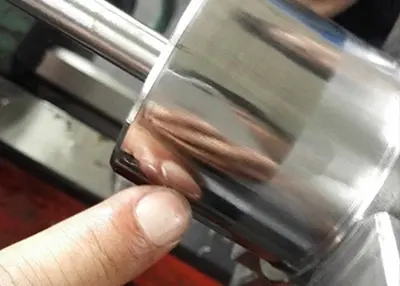 What are the commonly used surface finishing?September 27, 2023Surface finishing is to clean, sweep, deburr, de-grease, de-oxidize, etc., the surface of the workpiece, which is used to meet the corrosion resistance, abrasion resistance, decorative or other special functional requirements of the product.view
What are the commonly used surface finishing?September 27, 2023Surface finishing is to clean, sweep, deburr, de-grease, de-oxidize, etc., the surface of the workpiece, which is used to meet the corrosion resistance, abrasion resistance, decorative or other special functional requirements of the product.view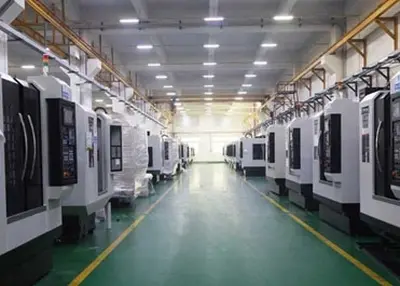 7 Tips for Choosing a Right CNC Machine ManufacturerSeptember 7, 2023Some companies seek a quality precision manufacturer with the best matching services. Nowadays, there are lots of CNC manufacturers to choose from. The problem is how to pick out the right CNC manufac...view
7 Tips for Choosing a Right CNC Machine ManufacturerSeptember 7, 2023Some companies seek a quality precision manufacturer with the best matching services. Nowadays, there are lots of CNC manufacturers to choose from. The problem is how to pick out the right CNC manufac...view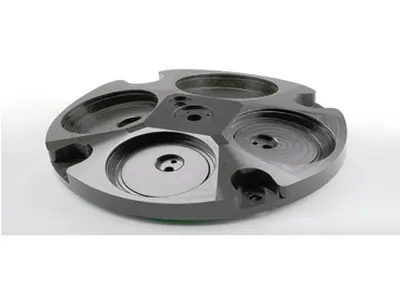 Smart Savings: How to Optimize Your CNC Projects with Cheap MaterialsDecember 4, 2023In the ever-evolving world of manufacturing, CNC machining has emerged as a game-changer. This revolutionary technology has enabled businesses to enhance productivity, reduce errors, and improve preci...view
Smart Savings: How to Optimize Your CNC Projects with Cheap MaterialsDecember 4, 2023In the ever-evolving world of manufacturing, CNC machining has emerged as a game-changer. This revolutionary technology has enabled businesses to enhance productivity, reduce errors, and improve preci...view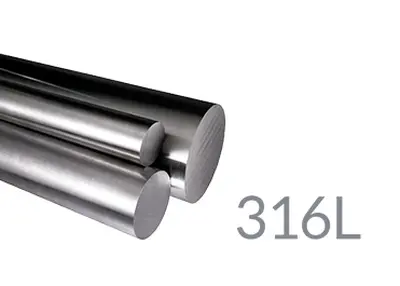 Excellent Corrosion Resistance of Stainless Steel-316L Stainless SteelOctober 24, 2023Dear viewers, today we are going to talk about an amazing material - 316L stainless steel. Did you know? This ordinary-looking material has amazing corrosion resistance! 316L stainless steel as a low carbon series of 316 steel, in addition to the same characteristics with 316 steel, its resistance to grain boundary corrosion is excellent, let's take a look at it!view
Excellent Corrosion Resistance of Stainless Steel-316L Stainless SteelOctober 24, 2023Dear viewers, today we are going to talk about an amazing material - 316L stainless steel. Did you know? This ordinary-looking material has amazing corrosion resistance! 316L stainless steel as a low carbon series of 316 steel, in addition to the same characteristics with 316 steel, its resistance to grain boundary corrosion is excellent, let's take a look at it!view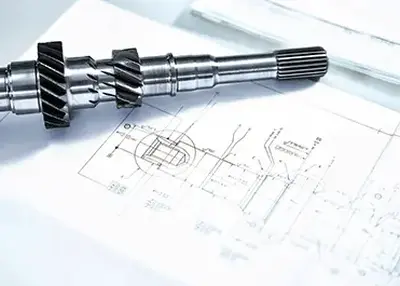 Unlocking the Secrets of Spline Machining: A Comprehensive GuideNovember 15, 2023In the intricate world of manufacturing, the precision required for creating components like splines demands a deep understanding of machining processes. In this comprehensive guide, we embark on a detailed exploration of the art and science behind spline machining, unraveling its complexities and unveiling the techniques that shape these vital engineering elements.view
Unlocking the Secrets of Spline Machining: A Comprehensive GuideNovember 15, 2023In the intricate world of manufacturing, the precision required for creating components like splines demands a deep understanding of machining processes. In this comprehensive guide, we embark on a detailed exploration of the art and science behind spline machining, unraveling its complexities and unveiling the techniques that shape these vital engineering elements.view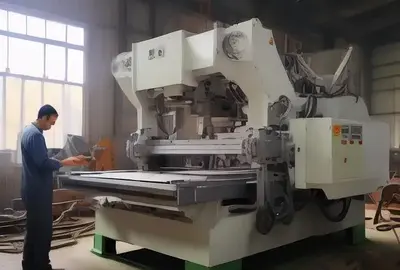 The Application of CNC Machining in Mechanical Equipment - SheetMay 7, 2024Let’s explore the world of sheet in mechanical equipment! Read this article to discover its importance, applications, manufacturing processes, and more.view
The Application of CNC Machining in Mechanical Equipment - SheetMay 7, 2024Let’s explore the world of sheet in mechanical equipment! Read this article to discover its importance, applications, manufacturing processes, and more.view